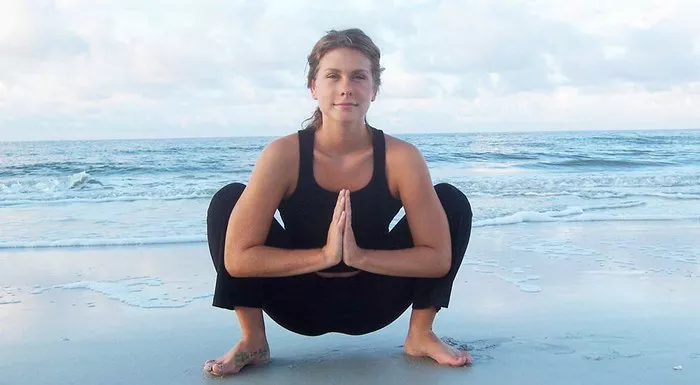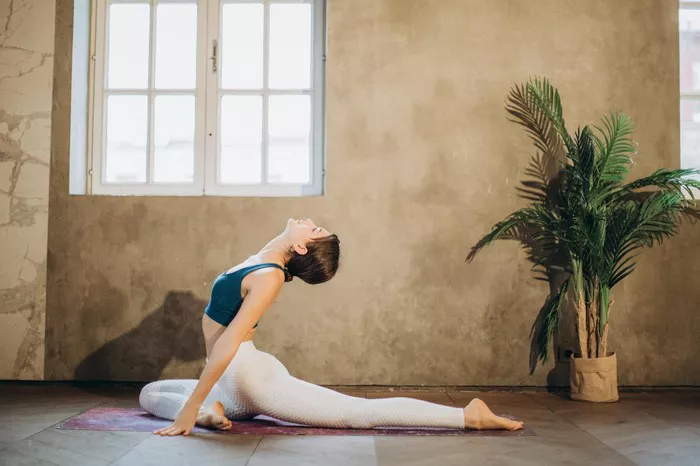Yoga, with its roots entrenched in ancient Indian traditions, has transcended centuries to become a global phenomenon. Among the myriad poses that grace the practice, Garland Pose, or Malasana, stands out as a potent symbol of strength, flexibility, and spiritual alignment. In this article, we delve into the origins, benefits, variations, instructions, and precautions associated with this transformative asana.
Origins and Symbolism
Garland Pose traces its lineage back to Hatha Yoga, one of the foundational branches of yoga. Its Sanskrit name, “Malasana,” originates from two words: “mala,” meaning garland, and “asana,” meaning pose. This pose embodies the graceful curvature of a garland, symbolizing unity, wholeness, and the cyclical nature of life.
In ancient yogic philosophy, the garland holds profound symbolism. It represents the interconnectedness of all beings, as each flower in a garland is connected to the next. By assuming this posture, practitioners seek to cultivate a sense of oneness with themselves and the universe, fostering harmony and balance within.
Physical and Mental Benefits
The physical benefits of Garland Pose are manifold, targeting various muscle groups and enhancing overall flexibility and strength. Primarily a hip-opening pose, Malasana stretches the groin, thighs, and lower back, alleviating tension accumulated from prolonged sitting or standing. Regular practice can improve hip mobility and alleviate discomfort associated with conditions like sciatica.
Furthermore, Garland Pose stimulates digestion and improves bowel movement, aiding in detoxification and promoting gastrointestinal health. By compressing the abdomen, it massages the internal organs, facilitating digestion and metabolism. This gentle compression also stimulates the sacral chakra, fostering emotional balance and creativity.
Mentally, Malasana serves as a grounding posture, promoting introspection and mindfulness. As practitioners sink into the pose, they cultivate a deep sense of presence, drawing their awareness inward. The gentle opening of the hips releases stored emotions and tensions, fostering a sense of release and liberation.
Variations and Modifications
Like many yoga poses, Garland Pose offers a spectrum of variations and modifications to accommodate practitioners of all levels and physical abilities.
For those with limited flexibility or mobility issues, placing a folded blanket or cushion under the heels can alleviate strain on the ankles and knees, making the pose more accessible. Additionally, using yoga blocks under the hands can provide support and stability, allowing individuals to ease into the posture gradually.
For advanced practitioners seeking a deeper stretch, variations such as Bound Garland Pose (Baddha Malasana) can be explored. In this variation, the hands clasp behind the back, intertwining fingers, while maintaining the squatting position. This variation intensifies the stretch in the shoulders and chest, while also challenging balance and concentration.
Step-by-Step Instructions
Practicing Garland Pose requires mindful attention to alignment and breath. Follow these step-by-step instructions to cultivate a safe and effective practice:
- Begin by standing at the top of your mat with feet hip-width apart.
- Exhale as you bend your knees, sinking down into a squatting position.
- Bring your palms together at heart center, pressing elbows against the inner thighs.
- Lengthen through the spine, lifting the chest and gaze towards the ceiling.
- Keep the weight evenly distributed between the heels and the balls of the feet.
- Engage the core muscles to support the lower back and pelvis.
- Hold the pose for 5-10 breaths, focusing on deep, steady inhalations and exhalations.
- To release, exhale as you straighten the legs and return to standing position.
Throughout the practice, maintain a gentle awareness of your breath and bodily sensations. Listen to your body’s cues and modify the pose as needed to ensure comfort and safety.
Precautions and Contraindications
While Garland Pose offers numerous benefits, it may not be suitable for everyone, especially those with certain health conditions or injuries. Individuals with knee or ankle injuries should exercise caution and avoid deep squatting positions that exacerbate discomfort. Pregnant women should also approach this pose with caution, modifying as necessary to accommodate their changing bodies.
Additionally, individuals with hip or lower back injuries should consult with a qualified yoga instructor before attempting Garland Pose, as improper alignment can exacerbate existing issues. Those with balance issues or vertigo should practice near a wall or with the support of a chair to prevent falls.
Conclusion
In conclusion, Garland Pose stands as a testament to the transformative power of yoga, offering a gateway to physical, mental, and spiritual well-being. By honoring its origins, embracing its variations, and practicing with mindfulness and intention, individuals can unlock the profound benefits of this ancient asana. As with any yoga practice, approach with patience, compassion, and a deep reverence for the journey within.
FAQs:
How long should you do the Malasana pose?
The duration of Malasana, or Garland Pose, can vary depending on individual flexibility and comfort levels. Generally, holding the pose for 5-10 breaths is recommended to allow for a gradual opening of the hips and a deepening of the stretch. Advanced practitioners may hold the pose for longer durations, but it’s essential to listen to your body and avoid overexertion.
What are the spiritual benefits of Malasana for females?
For females, Malasana offers spiritual benefits by tapping into the energy centers associated with the sacral chakra, located in the pelvic area. This chakra is linked to creativity, intuition, and emotional balance, qualities that are particularly significant for women. By practicing Malasana, females can cultivate a deeper connection to their feminine energy, fostering a sense of empowerment, creativity, and emotional harmony.
Why do we drink water in Malasana?
Drinking water in Malasana serves to hydrate the body and support the detoxification process. The squatting position compresses the abdomen, stimulating the digestive organs and facilitating the elimination of toxins. Hydration is crucial to maintain optimal digestive function and ensure smooth bowel movements. Drinking water during or after Malasana helps replenish fluids lost through sweating and supports overall hydration levels, promoting optimal health and well-being.















